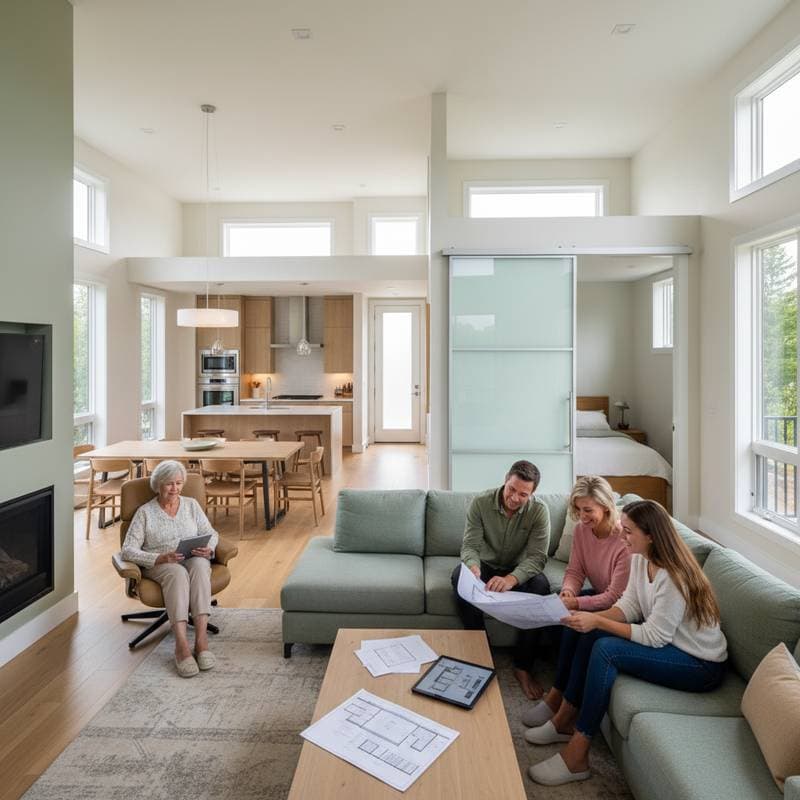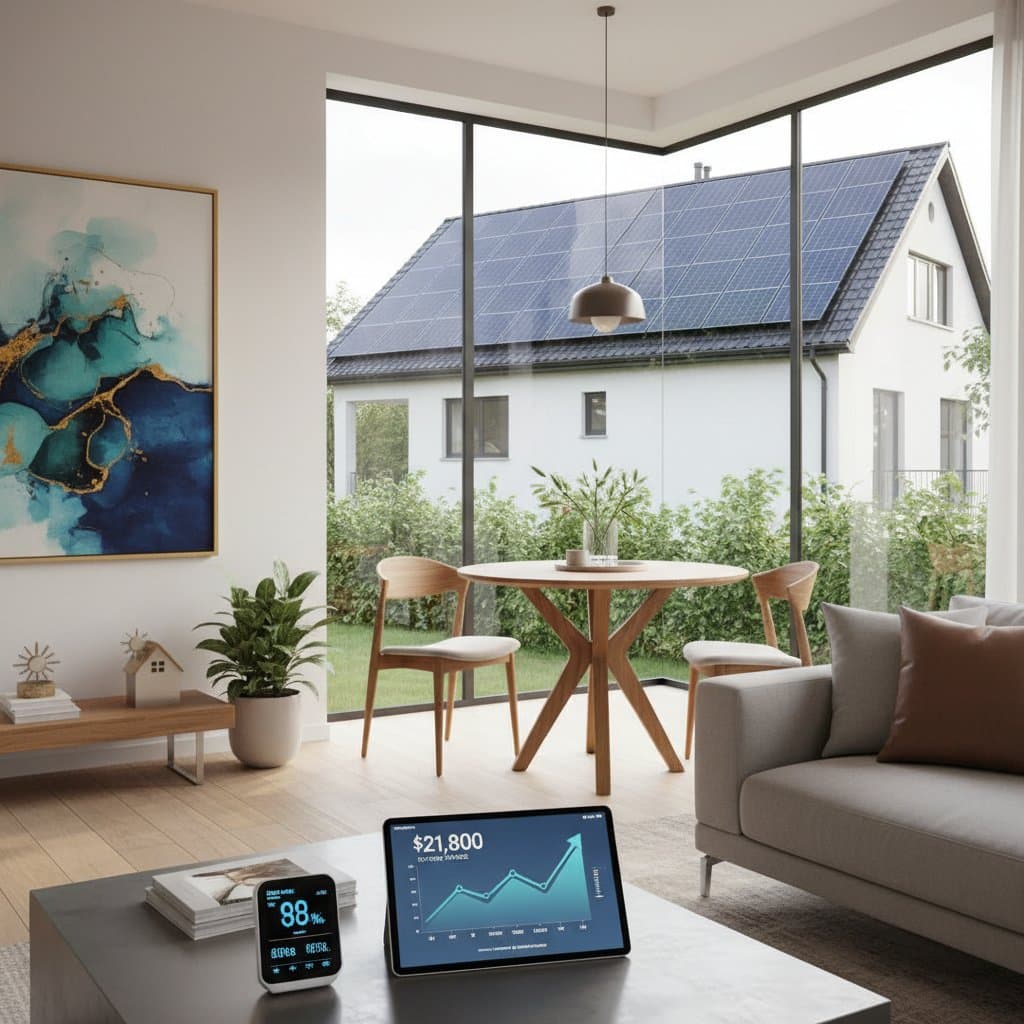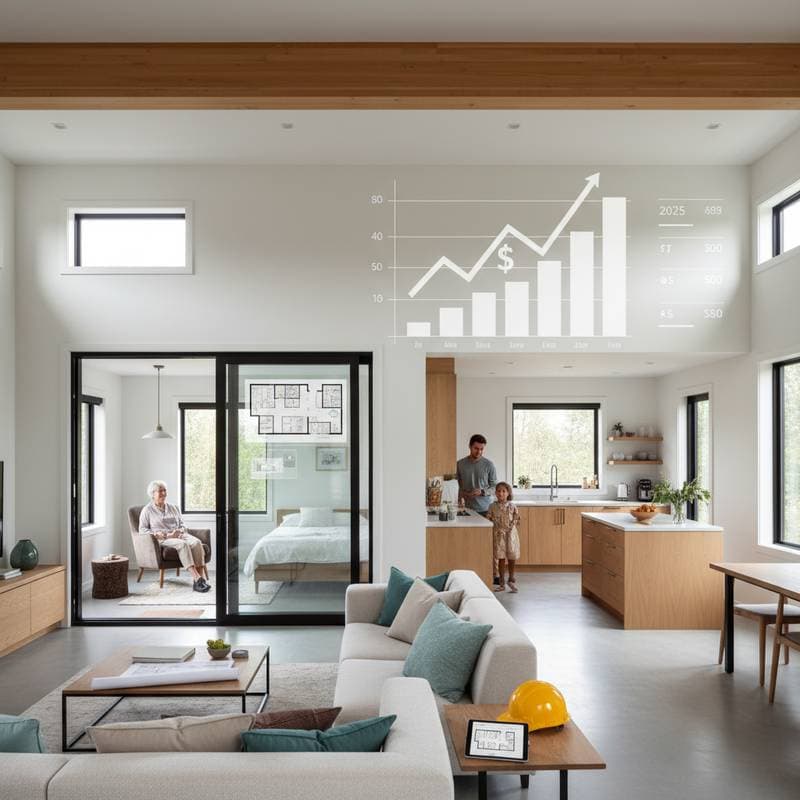Why ADU Costs Vary by Up to 40 Percent Across States in 2025
Summary Box
National average cost: $180,000
Typical range: $120,000 to $250,000
Low end and high end: $90,000 for a small prefab unit to $400,000 for a custom build
Time to complete: 3 to 6 months, including permitting
DIY or professional: Primarily professional, with limited DIY options for interior finishes
ROI or resale impact: 60 percent to 100 percent, based on rental market and zoning rules
Updated: March 2025
Accessory dwelling units, commonly known as ADUs or granny flats, provide homeowners with additional living space and opportunities for rental income. In 2025, ADU construction costs differ significantly by state, with variations reaching up to 40 percent due to differences in labor rates, permitting processes, material prices, and local building codes. These factors influence everything from initial planning to final installation. Homeowners who grasp these regional nuances can develop accurate budgets, sidestep unexpected expenses, and maximize the value of their investment.
Key Cost Factors Influencing ADU Projects
Construction expenses for ADUs stem from multiple interconnected elements. Regional differences amplify these costs, leading to the observed 40 percent variation between states. For instance, high-demand areas like California often see elevated prices compared to more rural states such as Idaho.
Scope and Size
The overall size and layout form the foundation of any ADU budget. A compact 400-square-foot studio typically costs less than half of a 900-square-foot two-bedroom unit with full amenities. Detached ADUs demand new foundations, utility connections, and separate access, which can increase expenses by 20 to 30 percent over attached options like garage conversions or basement additions. These conversions leverage existing structures, reducing the need for extensive groundwork and permitting hurdles.
Material Selection and Finishes
Choices in materials directly affect both upfront costs and long-term durability. Opting for premium elements, such as custom cabinetry, luxury tile showers, and quartz countertops, can elevate interior expenses by up to double the base amount. Such investments prove worthwhile for units intended for long-term rentals or family use, where quality enhances tenant satisfaction and property value. In contrast, selecting durable yet affordable alternatives like vinyl plank flooring and pre-fabricated cabinets lowers costs effectively for occasional guest accommodations or short-term stays.
Site Preparation and Accessibility
The physical characteristics of the building site play a critical role in expense management. Properties with level terrain and proximity to municipal sewer and power lines minimize preparation needs, keeping costs in check. Challenging sites, including sloped or rocky ground, extended driveways, or restricted vehicle access, necessitate additional excavation, reinforcement, and specialized equipment, potentially adding 15 to 25 percent to the total. In dense urban settings, delivering prefab components may require crane operations, incurring further fees for logistics and safety measures.
Regional Labor Markets and Seasonal Timing
Labor availability and rates fluctuate widely across states, contributing substantially to the 40 percent cost gap. Coastal regions with robust construction booms, such as those in the Northeast or West Coast, command higher hourly wages for certified electricians, plumbers, and framers due to demand and licensing requirements. Interior states often benefit from lower rates and more flexible scheduling. Additionally, initiating projects during off-peak seasons, like late fall or early spring, allows for negotiated discounts, while coordinating with a primary home renovation can streamline labor allocation and reduce overhead.
Customization and On-Site Adjustments
Initial designs set the budget baseline, but modifications during construction introduce risks. Alterations post-permitting, such as unique roof configurations, expansive outdoor decks, or integrated renewable energy systems like solar panels, extend timelines and trigger extra inspections. These changes not only inflate material and labor charges but also heighten the potential for delays. Homeowners benefit from finalizing all custom elements during the planning phase to maintain control over expenditures.
Strategies to Reduce Costs Effectively
Smart planning enables homeowners to build quality ADUs without compromising on essentials. Focus on efficiency from the outset to capture savings that align with long-term goals.
-
Select straightforward designs. Rectangular layouts with standard low-slope roofs simplify framing and roofing processes, cutting labor by 10 to 20 percent compared to intricate geometries. Eliminate non-essential features like dormer windows or high ceilings unless they serve a specific functional purpose.
-
Incorporate modular or panelized methods. These factory-assembled components minimize on-site waste and accelerate assembly, often reducing total construction time by one-third. While transportation fees apply, the uniformity in quality and fewer weather-related interruptions justify the approach for most projects.
-
Leverage existing infrastructure. Assess whether the primary residence's utilities can support the ADU's demands, avoiding the expense of new lines or meters. Consult local codes early to verify capacity limits and prevent costly retrofits later.
-
Obtain multiple detailed bids. Solicit at least three comprehensive proposals from licensed contractors, ensuring each breaks down costs for materials, labor, and contingencies. Verify inclusions for site cleanup, waste disposal, and post-completion warranties to enable fair comparisons.
Essential Elements for Quote Evaluation
- Itemized breakdown of project scope
- Specified material types and suppliers
- Coverage for surface preparation and debris removal
- Inclusion of permitting, inspection, and disposal costs
- Clear warranty details and project milestones
- Milestone-based payment structure
- Align timing with market conditions. Schedule work for periods of lower contractor demand to secure better rates, or integrate the ADU build with concurrent home improvements for shared resource efficiencies.
Project Timeline and Coordination
ADU development follows a structured sequence, with durations varying by complexity and location. Account for local permitting timelines, which can extend in regulated areas.
- Design and approval phase: 1 to 3 months, influenced by municipal review efficiency
- Site preparation and foundation work: 1 to 2 weeks, weather permitting
- Framing, rough plumbing, and electrical: 4 to 8 weeks for core structure
- Interior finishes and final inspections: 3 to 6 weeks to complete and certify
Modular ADUs compress the overall schedule, yet foundational and connection tasks remain time-intensive. Incorporate a 10 to 15 percent buffer for unforeseen delays like inclement weather or supply chain issues.
Ensuring Longevity Through Maintenance
Well-constructed ADUs endure alongside the primary residence, often spanning 50 years or more with diligent care. Establish a routine maintenance plan to protect this investment.
Regular inspections of the roof, foundation, and exterior siding prevent minor issues from escalating. Schedule annual servicing for heating, ventilation, and plumbing systems to maintain efficiency and compliance. Interior upkeep, including pest control and moisture checks, supports habitability and preserves resale appeal. Budget 1 to 2 percent of the initial cost annually for these measures, ensuring the unit remains a reliable asset.
Maximizing Returns on Your ADU Investment
Beyond construction, strategic decisions enhance the financial and practical benefits of an ADU. In states with favorable zoning, rental yields can offset costs within 5 to 7 years, while resale boosts average 70 percent recovery on outlays. Prioritize energy-efficient features to lower ongoing expenses and appeal to eco-conscious buyers. By addressing regional cost drivers early, homeowners position their ADUs as versatile spaces that add enduring value to the property.



